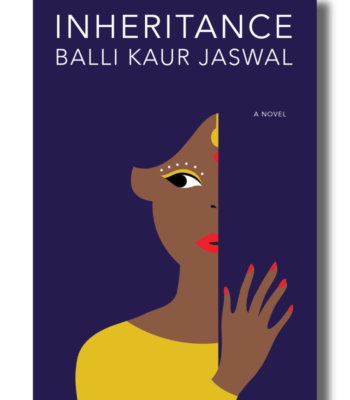A Familial Journey of Deviants in Young Singapore
For many young adults, our impression of Singapore in the 1970s is likely one influenced by history books and stories from our parents, grandparents and other older relatives. I am no exception, which is why I particularly loved the vivid details of post-independence Singapore which Balli Kaur Jaswal has painted in her book, Inheritance, that helped me visualise a version of my homeland I never experienced.
Set in Singapore between the 1970s and the 1990s, Inheritance tells of a traditional Punjabi family’s journey as they face familial fissures, which are later slowly revealed to stem from underlying issues each of them faces as individuals. All these are happening in parallel to the narrative of Singapore’s development, and the family must learn to cope with the changes and challenges that come along, both in their environment and within themselves. The book, which is also Jaswal’s debut novel, won the Sydney Morning Herald’s Best Young Australian Novelist Award in 2014 and was also adapted into a film at the Singapore International Festival of the Arts in 2017.

To introduce the characters, we have Harbeer, father to two sons Narain and Gurdev, as well as a daughter Amrit. The family also takes in the children’s cousin, Karam, after his parents’ demise. The story starts off with father Harbeer sending his son, Narain, to America for tertiary education — and escalates after Amrit, whom Narain has always been looking after, disappears from the house in the middle of the night. Through the rest of the story, we learn that each of the characters is a deviant in their own way, trying to navigate their way through life while being different from what is considered ‘ideal’ in society.
In this review, I will be looking at some underlying themes that occur in the book, namely teenage rebellion, familial fissures and mental health. Warning — spoilers ahead!
1. Rebellion
For Narain and Amrit, being rebellious against Harbeer could be seen as a terrible thing, but it is an instrumental part of their personal growth and self-discovery. Narain sees his tertiary education journey in America as a chance to try new things and escape from the traditional culture he was so used to back home. In the process of forming relationships with others, he also eventually discovers his sexuality, one which was not socially acceptable.
Amrit, on the other hand, finds herself in bad company and her actions eventually spiral out of control. But, it has also led to her discovering an illness she never knew she had. While Amrit’s and Narain’s rebellion leave their father extremely sad and helpless, it is a process where they learn more about themselves and one that eventually leads them to a path of healing, both for themselves and their father.
2. Familial fissures
The friction between Gurdev and Karam is evident very early on in the book, akin to sibling rivalry. It starts off with Karam always seeming to do better than Gurdev in terms of career and wealth, and eventually evolves into a spat over the inheritance money that Harbeer plans to split among the four children.
And then there is Narain and Amrit, who are close at the start but drift apart later on due to Amrit’s uncontrollable behaviour. With his father always expecting Narain to take care of Amrit, Narain cannot help but feel as though his life only revolves around her. It is no wonder Narain perceives Amrit not only as a burden to the family but also a hindrance to his life. Fortunately, it is also this relationship which gradually lets the pair discover the unexpected reason for Amrit’s actions.
3. Mental health
Perhaps the most important theme of the lot, mental health is an underlying issue throughout the book. It may not be obvious at the start but is constantly hinted at, through Amrit’s lack of control over her own actions and corresponding breakdowns. Jaswal slowly hints at Amrit’s suicidal tendencies when Amrit feels that no one, not even herself, is taking her cries for help seriously, and finally culminates in her attempt to throw herself in front of a vehicle before Narain ‘saves’ her (it is later revealed that she had actually saved herself but imagined that it was Narain who did).
Another character who suffers from mental health issues is Harbeer, the father of the four children and seemingly the strong and firm glue that holds all of them together. He has always been perturbed by the visits from his wife Dalveer who left the family after Amrit was born, as he had to keep them a secret from his children. It is later revealed that Dalveer has passed away immediately after Amrit’s birth, and all he has been seeing are hallucinations — his coping mechanism to deal with the loss of a loved one.
Final thoughts
Personally, I was most struck by the mental health narrative as in the storyline, it seemed that there was little awareness of mental issues and a strong stigma associated with mental illnesses, which we as a contemporary society today should definitely move away from. The book was a tough but rewarding read for me as the story starts from an unfamiliar setting and it seems like everything is crashing down in every character’s life. And just when I thought things couldn’t get any worse, the familial conflicts escalate more and more.
But the feeling of wanting to know more kept me going, and by the end of it, I was in awe of the twists and resolutions that each of the characters experiences. In particular, I liked the optimistic twist at the end, when Gurdev’s two older daughters save the youngest girl who is following in Amrit’s footsteps — or so Gurdev assumes. He then realises his daughters, the next generation of the family, are stronger and smarter than he thinks. The book was definitely a heart-gripping one for me, and I strongly recommend that you grab a copy from your local bookstore or library to experience this emotional rollercoaster ride for yourself!
By: Daphne Yow
ReadNUS Editorial Team
